Spotted-wing drosophila monitoring helps to determine when populations begin to build up, and can help save growers' spray applications in a late infestation year. In 2021, we tested red sticky card traps, baited with SWD lures, to detect first arrival of SWD in berry plantings and cherry orchards. The baited, red sticky traps provided good results for the SWD monitoring network. We found that the red sticky traps have potential for use by growers and consultants to monitor SWD pressure in at-risk fruit plantings. The exciting news is that Laura McDermott, ENYCHP, obtained grant funding to further test the red sticky traps and to lead a statewide effort to educate growers and consultants on their use.
SWD monitoring recap:
The 2021 statewide monitoring effort included 126 trap locations monitored by 16 Cornell extension scientists in 23 counties. During the season, first trap catch across the SWD monitoring network occurred over a 14-week-long period, from May 11 (Niagara County) to August 17 (Steuben County). The occurrence of first catch over several weeks is typical for SWD occurrence in New York State. However, most trapping sites were not catching SWD during the late May and early to mid-June period, and only one reached sustained catch in early June. Normally, by mid-June, most traps will have caught SWD.

Scentry jar traps with lure have been used in the SWD monitoring network since 2016. Lured jar traps from which SWD are filtered, sorted from related species, then identified with magnification are currently the best at attracting the first insects, but growers cannot implement this level of monitoring and the statewide trap network isn’t robust enough to deliver farm-specific information. Using an easier monitoring method, if it works as well as the jar traps, will help growers monitor SWD on their own farms. Growers in New Jersey and Ontario, Canada have successfully used red sticky card traps with lures to monitor SWD on their farms.
Sticky card trap results:
Cornell extension scientists in the SWD monitoring network conducted a preliminary test in 2021 of the use of red sticky card traps. A total of 20 locations, where both the Scentry-lure-baited jar traps and the Trécé-lure-baited red sticky card traps were being used, yielded data to compare the first trap catch date for the jar traps and the red sticky card traps. First catch on the red sticky cards compared to the jar traps was about one week earlier at 40% of the trap locations (8 out of 20), about one week later at 45% of the locations (9 out of 20) and on the same date at 15% of the locations (3 out of 20) . These results suggest that the red sticky cards will work comparably to the jar traps and that using sticky traps won’t lead to trap catch results being obtained too late, which would place crops at possible risk of infestation from populations of SWD that have gone undetected.
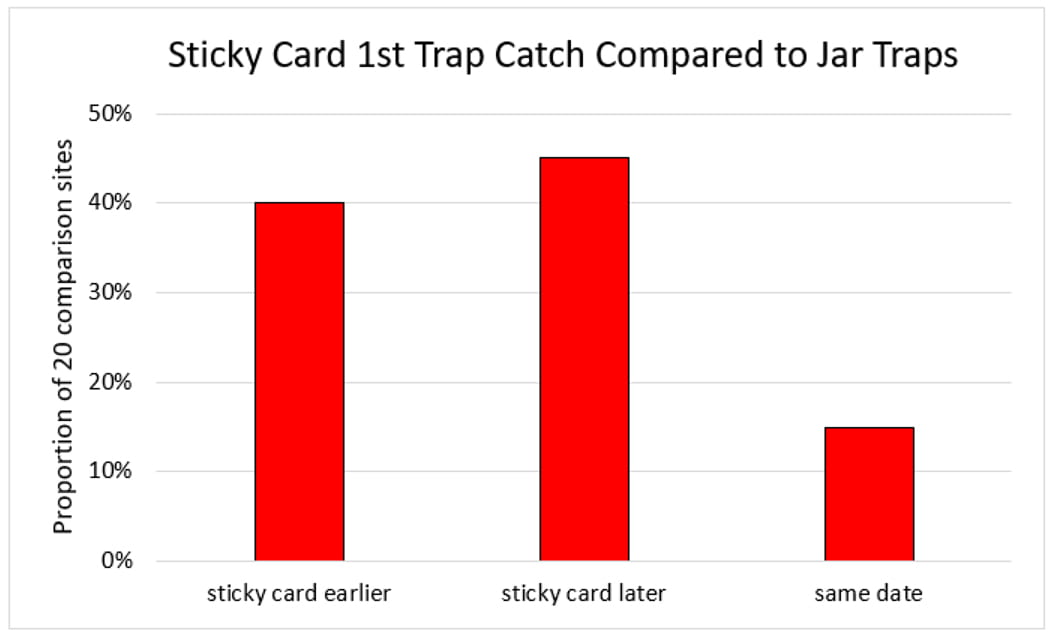
Setting up sticky cards:
The red sticky cards are relatively easy to use, though the sticky coating on the traps can pose a challenge for the user. Wearing nitrile, latex, or plastic disposable gloves to protect hands from the sticky goo on the trap is essential. Tying back long hair can be helpful. An SWD lure is positioned above the red sticky card, which is hung from a branch, trellis wire or wooden stake, preferably 1.5 m (5 ft.) off the ground, and within the fruit zone in a shaded area. In berries, this will depend on how the plants are trained and traps may need to be placed lower. Traps must be secured tightly to the trellis wire, branch, or wooden stake to minimize sliding or blowing around with the wind or the airblast sprayer. Canes or branches should be tied up or removed so the sticky traps are easily seen and won’t contact any foliage or berries. Mark the location of the trap with flagging tape. Label the trap with a code number for your records. Record the date the trap and lure were set out in the field and the trap GPS coordinates, if needed.
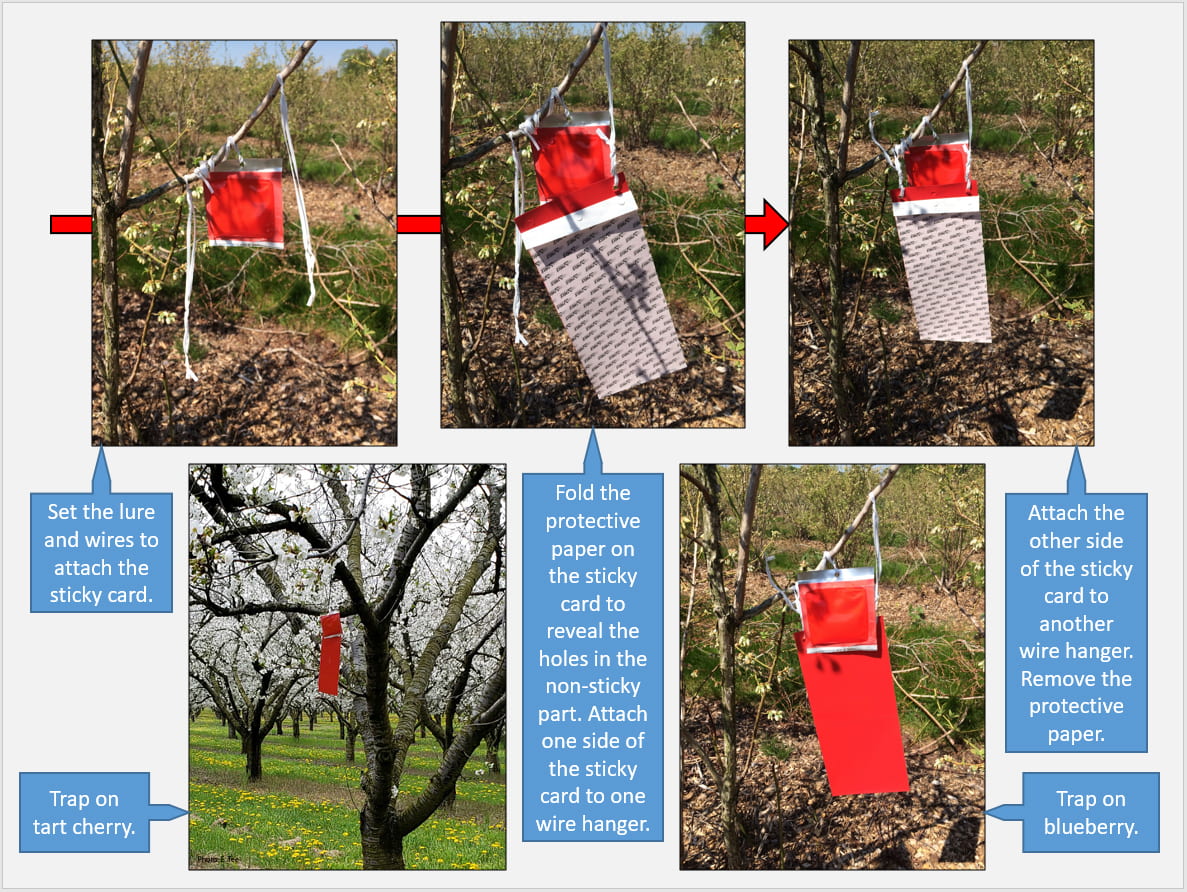
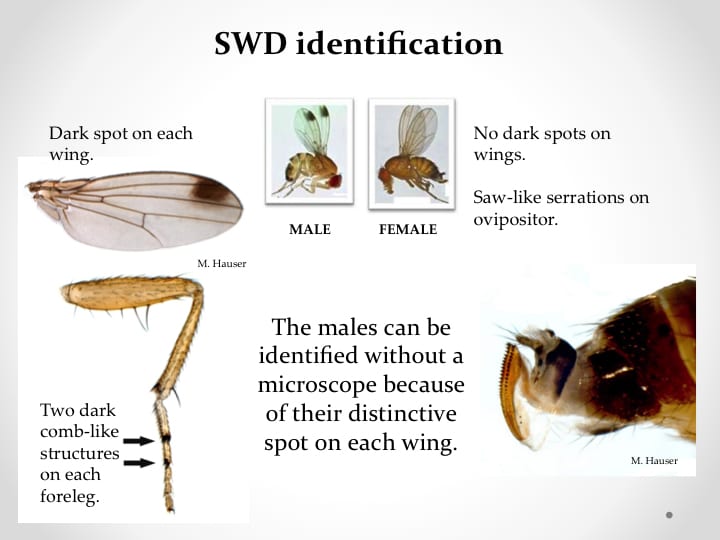
Reading the sticky cards:
It is easy to identify the male flies, because they have the distinctive oval spot on each wing. To service the trap and identify the male SWD, again, it is best to wear gloves and tie back long hair to protect yourself from the sticky goo. Each week, remove the trap and check for stuck male SWD. Examine both sides of the sticky trap with a hand lens, magnifying glass or OptiVisor DA 7 (2.7x magnification) or DA 10 (3.5x). Enumerate the male SWD caught on both sides of the sticky card and record the total number per red sticky card trap. Discard the examined trap and install a new one. It is very important to change the trap weekly when you check for SWD. This will make it much easier to identify insects. Change the lure every 4 weeks and make note of the date the lure was changed.
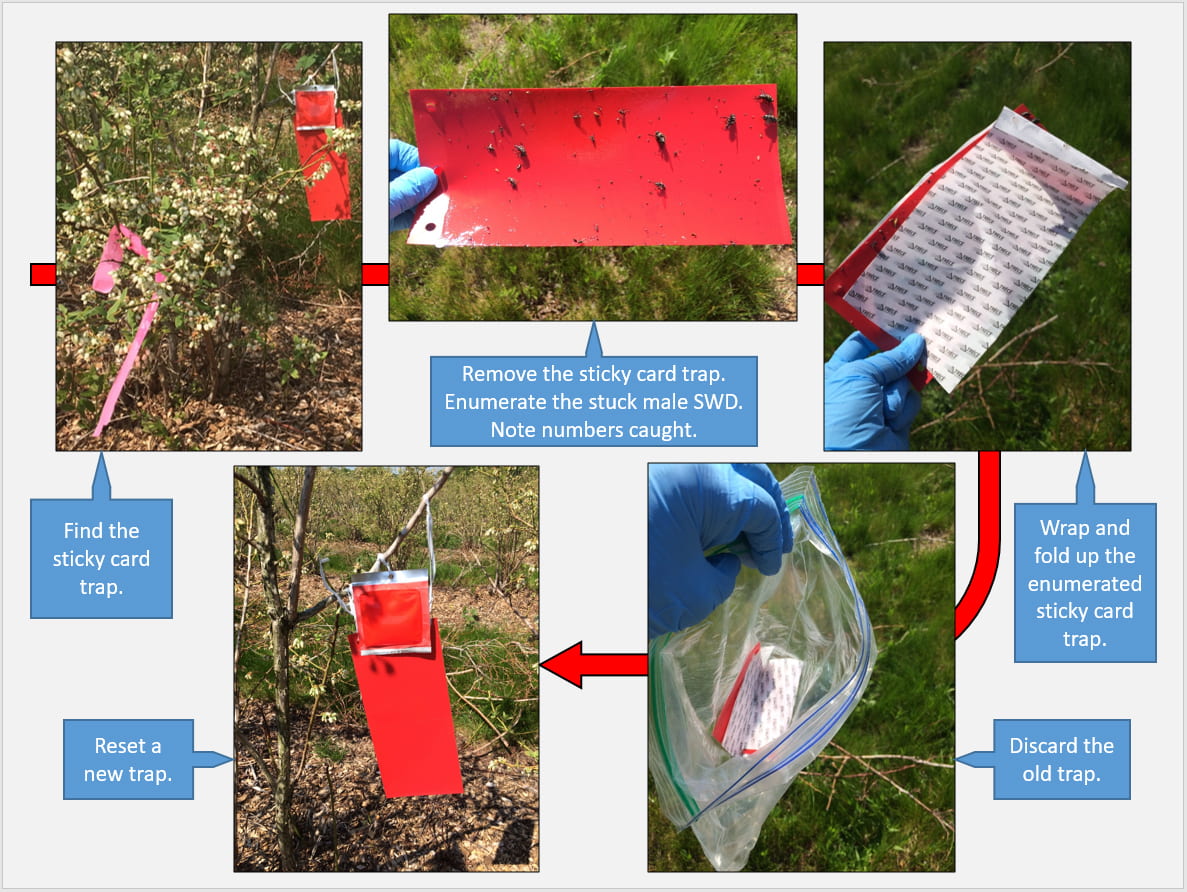
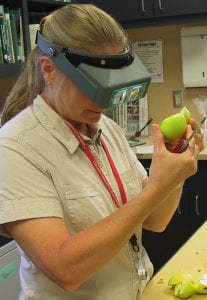
Future plans:
The two-year grant paves the way for further testing the red sticky card traps and educating growers and consultants on their use. This project is getting started in spring 2022. It will entail grower and consultant demonstrations, extension materials, and education efforts on the use of red sticky cards baited with SWD lures, to monitor for SWD in berry plantings and cherry orchards.
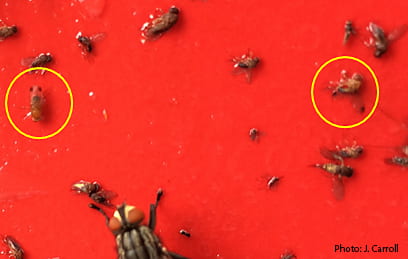
Acknowledgements:
We want to thank the collaborators on the 2021 SWD monitoring network, many of whom tested the red sticky cards.
Andy Galimberti, ENYCHP, CCE
Ariel Kirk, Steuben County CCE
Barb Neal, Tioga County CCE
Dave Thorp, Livingston County
Don Gasiewicz, Wyoming County CCE
Elisabeth Hodgdon, ENYCHP, CCE
Elizabeth Tee, Lake Ontario Fruit Program (LOF), CCE
Faruque Zaman, Suffolk County CCE
James O'Connell, Ulster County CCE
Liz Alexander, Chemung County CCE
Natasha Field, ENYCHP, CCE
Sarah Tobin, ENYCHP, CCE
Support for this work was provided by the NYS Berry Growers Association, the NYS IPM Program, and the USDA NIFA CPPM EIP Award 2017-70006-27142.
This blog was co-authored by Laura McDermott, Janet van Zoeren, and Anya Osatuke. Eastern NY Commercial Horticulture Program, Lake Ontario Fruit Program, and Harvest NY, respectively, all with Cornell Cooperative Extension.

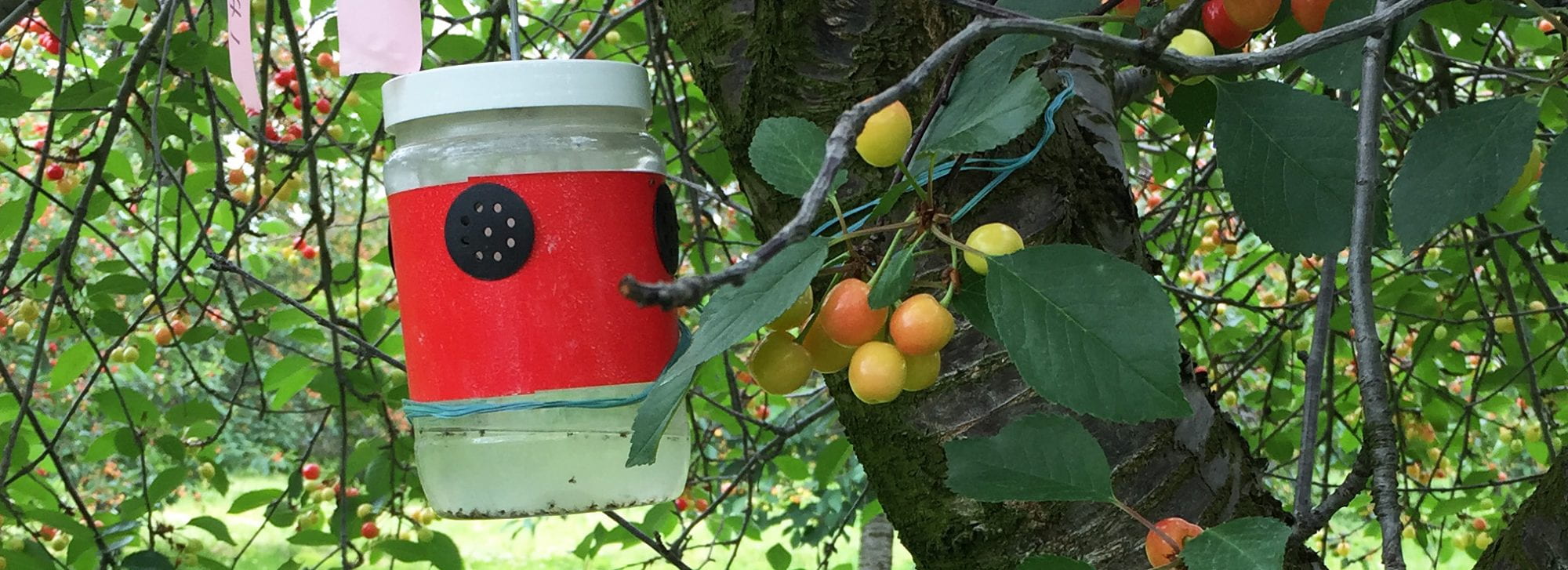
Where can growers obtain red sticky cards ?
Red sticky card traps and lures for SWD can be obtained from Great Lakes IPM, online at https://www.greatlakesipm.com/.
Thank you for sharing this information! Are the lures that were used the peel-pak lures? I am having trouble finding the lures that are pictured on GL IPM.
Yes, the lures to use with the red sticky card traps are the peel-pak lures. They are available from GL IPM, see this url, https://www.greatlakesipm.com/monitoring/lures/fruit-fly/gltr500103p-trece-pherocon-swd-peel-pak-lures-3cs, or search for Pherocon SWD peel-pak lures. For the sticky traps, search for SWD sticky adhesive traps. There may be other vendors and manufacturers who make these traps and lures, no endorsement is intended by providing this information.